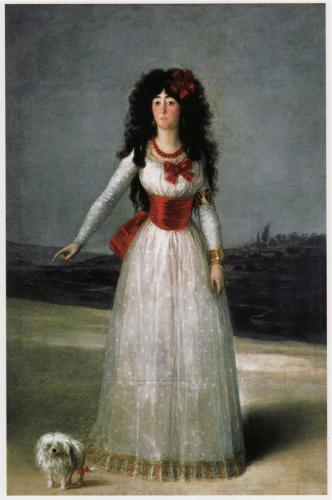-
Par MMaxi le 3 March 2012 à 18:36

Goya " Los Caprichos "
Spanish: Al Conde Palatino
English: To the Count Palatine
In all sciences there are people who know everything without
Having learned and have a ready remedy for all ills.
One can't believe what they say.
The really intelligent person mistrusts them.
The educated person makes moderate promises and keeps much in reserve.
The Count Palatine never keeps any promisses at all.
MMaxi12
-
Par MMaxi le 27 February 2012 à 22:51

Goya " The Capriccios "
Spanish: Por que fue sensible
English: She Was So Easily Influenced
This was to be expected. The world has its ups and downs
and the life she led has no other end.
MMaxi12
-
Par MMaxi le 27 February 2012 à 22:22

Goya Los Caprichos
Spanish: Ruega por ella
English: She Prays for Her
And she did well to do so ... that God may give her luck, keep her from harm, moneylenders, and cops ...
Make her skilful and carefull, wide-awake, and ready as her sainted mother.
MMaxi12
-
Par MMaxi le 27 February 2012 à 21:56

Goya Capriccios
Spanish: Porque Esconderlos?
English: Why Hide the Money?
The answer is easy. He won't spend it; He doesn't spend it;
he can't spend it. Although he is over eighty and as barely another month to live,
he is afraid that he might have no more left if he lives longer.
Such are the mistakes of Greed.
MMaxi12
-
Par MMaxi le 13 August 2010 à 01:42

It was in the year 1795 that the name Alba first appears in Goya's life.
The Duchess of Alba, 1795
Oil on canvas, PC, Madrid
On the 9th of june 1796 the Duke of Alba died in Seville and the Duchess spent her period of mourning on her country estate at Sanlùcar de Barrameda, in the province of Seville.
Various evidence indicates that Goya made a prolonged stay there at this time.
There are also two albums of drawings connected with this stay on the Alba estate.
They certainly contain some sketches of the Duchess and various members of her little country court.
Some of these Sketches were to basic elements for the composition of the Caprichos.
It was, in fact, just after this stay at Sanlùcar that Goya began to work actively on this series of etchings, which was finally published in 1799.
The Duchess of Alba, 1797
Oil on canvas
-
Par MMaxi le 11 August 2010 à 01:48

The Countess del Carpio, *Marchioness of Solana 1794-1795
Oil on Canvas
Musée Du Louvre, Paris
*marchioness |ˈmär sh (ə)nəs|nounthe wife or widow of a marquess.• a woman holding the rank of marquess in her own right.ORIGIN late 16th cent.: from medieval Latin marchionissa, feminine of marchio(n-) ‘ruler of a border territory,’ from marcha ‘march’
-
Par MMaxi le 11 August 2010 à 01:27

The Duchess of Osuna Oil on canvas in Private Collection
The oil painting of the Duchess of Osuna, the beautiful quality of the portrait of the Duchess, with the rich harmony of it's colours, could deservedly take its place among the most outstanding of Goya's female Portraits, Which as a series constitute one of the artist's finest achievements. It seems in this case that the Duchess's captivating personality, clearly described in contemporary accounts,Succeeded in breaking down the barrier of inhibitions that seem to have hampered the painter's natural spontaneity when confronted with sitters of high station.
-
Par MMaxi le 11 August 2010 à 00:51

The Parasol, certainly one of the most popular paintings in Spanish Art, which was to make so widespread an impression,
demonstrate Goya's ability in the face of artistic concepts and conditions that must have incited his innate nonconformity.
Part of the Tapestry cartoons.
Oil on canvas.
-
Par MMaxi le 11 August 2010 à 00:33

Francisco Goya born 30th March 1746 in Fuendetodos
Leocadia Zorrilla (formely known as Josefa Bayeu ), ca 1814
-
Par MMaxi le 10 August 2010 à 18:58

Goya 1746-1828
The remarkable Self-Portrait illustrates the painter's mastery at the age of about twenty-seven.
A number of versions of the painting exist.
It is the first of a series of self-portraits that continues throughout his career, recording truthfully and impassively the gradual transformation of his physiognomy.
The portrait is charged with energy and indicates an early physical maturity.
The occasion for this portrait was probably Goya's marriage to Francisco Bayeu's sister, Josefa.
The marriage took place in Madrid on 25th july 1773.
 Follow this section's article RSS flux
Follow this section's article RSS flux
MMaxi on the move


